- News
- Reviews
- Bikes
- Accessories
- Accessories - misc
- Computer mounts
- Bags
- Bar ends
- Bike bags & cases
- Bottle cages
- Bottles
- Cameras
- Car racks
- Child seats
- Computers
- Glasses
- GPS units
- Helmets
- Lights - front
- Lights - rear
- Lights - sets
- Locks
- Mirrors
- Mudguards
- Racks
- Pumps & CO2 inflators
- Puncture kits
- Reflectives
- Smart watches
- Stands and racks
- Trailers
- Clothing
- Components
- Bar tape & grips
- Bottom brackets
- Brake & gear cables
- Brake & STI levers
- Brake pads & spares
- Brakes
- Cassettes & freewheels
- Chains
- Chainsets & chainrings
- Derailleurs - front
- Derailleurs - rear
- Forks
- Gear levers & shifters
- Groupsets
- Handlebars & extensions
- Headsets
- Hubs
- Inner tubes
- Pedals
- Quick releases & skewers
- Saddles
- Seatposts
- Stems
- Wheels
- Tyres
- Health, fitness and nutrition
- Tools and workshop
- Miscellaneous
- Buyers Guides
- Features
- Forum
- Recommends
- Podcast
review
£75.00
VERDICT:
Fast-rolling, comfortable big-chamber slick tyre for tarmac and well-dressed gravel
Surprisingly easy to set up tubeless
Hugely supple
Expensive
Grip on tarmac not the best
Sidewalls more vulnerable than some
Weight:
380g
Contact:
At road.cc every product is thoroughly tested for as long as it takes to get a proper insight into how well it works. Our reviewers are experienced cyclists that we trust to be objective. While we strive to ensure that opinions expressed are backed up by facts, reviews are by their nature an informed opinion, not a definitive verdict. We don't intentionally try to break anything (except locks) but we do try to look for weak points in any design. The overall score is not just an average of the other scores: it reflects both a product's function and value – with value determined by how a product compares with items of similar spec, quality, and price.
What the road.cc scores meanGood scores are more common than bad, because fortunately good products are more common than bad.
- Exceptional
- Excellent
- Very Good
- Good
- Quite good
- Average
- Not so good
- Poor
- Bad
- Appalling
The Challenge Strada Bianca Pro TLR is a high quality, big chamber slick that's ideal for a mixture of tarmac and well-graded gravel. It was surprisingly easy to set up and offers a supple ride, especially on well-made gravel roads.
The Challenge Strada Bianca is no stranger to road.cc, and the reviews of it chart the progress of tyre tech over the last six years. Back in 2014 we tested the 30mm version, and that was a big old tyre back then. Then in 2016 we had a go on the 33mm vulcanised version and that was a hit too.
> Find your nearest dealer here
Skip forward to now and the Strada Bianca is available in widths up to 40mm, and you can even run them tubeless. How very modern. But for all that modernity in terms of size and tubeless compatibility, this is a very traditional tyre in terms of its build: an open tubular, using a high quality 260TPI SuperPoly casing with the thread glued on, and a puncture protection layer sandwiched in between. That kind of construction requires a bit more human involvement in the production process than vulcanising them in a big press, which goes some way to explain the salty price tag: £75 for this 36mm tyre, or £83 for the 40mm version.
The Strada Bianca Pro isn't vulcanised, so it isn't tyre-shaped when you rip it from its packaging: it lies entirely flat, and has to be coaxed into a tyre shape. I've had some fairly lengthy and sweary sessions fitting tyres of this ilk, even with an inner tube in, so I was expecting to have to block out a weekend for getting these up and running tubeless. But to my surprise and joy they were simple to fit, sufficiently so that the rear didn't even require the Airshot, it just pumped straight up with the track pump.
I fitted them to some Reynolds AR41X carbon wheels and some Mavic Aksium Elite alloy rims with nary a single swear, and they stayed up well too. The carcass is thin, and not entirely air tight, so you need to be reasonably generous with the sealant, but once they're sealed they're impressively impermeable, and a quick check of the pressures before you head out is all you need.
These are light tyres for a 36mm. Weighing in at just 380g an end (plus 40ml of sealant), they're much lighter than most comparably sized tyres; something like the IRC Boken is about 100g heavier. That's down to the lack of vulcanisation and high-thread-count casing, which also gives these tyres a very supple feel over all kinds of surfaces.
> Buyer’s Guide: 25 of the best gravel bike tyres
On the road they roll extremely well: they feel like road tyres, even though I generally only had them pumped up to a maximum of 55/50psi front and rear. For mixed surface riding I ran them at 45/40psi and at that kind of pressure you can tear along well-prepared gravel trails with almost magic carpet levels of comfort. On the graded stuff these are really, really good.
When things get technical the herringbone grip isn't going to hang on to anything too gnarly, and there's no shoulder tread to hang on to off-camber sections. They're not the absolute best on wet roads either, though they're okay: I could make them slip out at the rear putting the power down on greasy road climbs, but they felt surefooted enough coming down stuff. However, for the better-surfaced end of the gravel spectrum they're hard to beat. There's enough air chamber that you can get away with the odd bad line choice at speed, and from time to time I bumped them against the rim on an exposed rock or through a hidden pothole, but a check of the tyres hasn't revealed any damage.
The non-vulcanised sidewalls aren't going to be as sturdy as a heavier tyre, so if you live somewhere that's full of sharp flinty bits waiting to cut a hole in your tanwalls, that's something to consider. Anything poking through the tread should get sealed just fine though, and during testing I've not managed to put any kind of hole in them that's caused them to lose pressure. That's more by luck than judgement.
Value
They're expensive, no doubt about that. Lots of good tyres are, though, and at RRP they're not massively more than something like a Schwalbe G-One Speed, which now comes in a 700x38 size and is probably the most direct competitor; the WTB Byway also comes in 700x40 and is good for a similar range of surfaces. Of the big-chamber slicks, the Compass/Rene Herse Barlow Pass TC is probably the pick right now, although they can be difficult to find.
Conclusion
The Strada Bianca is a very good tyre though, and if you've got room in your frame it'll transform your bike in terms of comfort and remit over a stock 28mm tyre.
Verdict
Fast-rolling, comfortable big-chamber slick tyre for tarmac and well-dressed gravel
road.cc test report
Make and model: Challenge Strada Bianca Pro TLR
Size tested: 700x36
Tell us what the product is for and who it's aimed at. What do the manufacturers say about it? How does that compare to your own feelings about it?
Challenge says, 'Race it hard or just head off the beaten path. The Strada Bianca takes the proven construction of the Paris-Roubaix and adds volume to take you comfortably over less-than-perfect surfaces. This is your tire for rough roads, packed dirt, and most gravel surfaces.'
Tell us some more about the technical aspects of the product?
Challenge lists:
-260 TPI SuperPoly casing
-PPS2 puncture protection
-Aramid bead
Rate the product for quality of construction:
9/10
Rate the product for performance:
8/10
Rate the product for durability:
7/10
Rate the product for weight (if applicable)
8/10
Rate the product for comfort (if applicable)
9/10
Rate the product for value:
5/10
Tell us how the product performed overall when used for its designed purpose
Very well.
Tell us what you particularly liked about the product
Surprisingly easy to set up tubeless, hugely supple.
Tell us what you particularly disliked about the product
Expensive, grip on tarmac not the best, sidewalls more vulnerable than some.
How does the price compare to that of similar products in the market, including ones recently tested on road.cc?
It's comparable to other high-spec big-chamber slicks, which are mostly in the £65-£75 price bracket.
Did you enjoy using the product? Yes
Would you consider buying the product? Yes
Would you recommend the product to a friend? Yes
Use this box to explain your overall score
A big outlay, yes, but moving to these tyres from something like a stock 28mm/32mm vulcanised tyre can transform the feel of a bike.
About the tester
Age: 47
I usually ride: whatever I'm testing... My best bike is: Kinesis Tripster ATR, Merida Scultura, Dward Design fixed
I've been riding for: Over 20 years I ride: Every day I would class myself as: Experienced
I regularly do the following types of riding: road racing, time trialling, cyclo cross, commuting, touring, club rides, sportives, general fitness riding, fixed/singlespeed, mtb, Mountain Bike Bog Snorkelling, track
Dave is a founding father of road.cc, having previously worked on Cycling Plus and What Mountain Bike magazines back in the day. He also writes about e-bikes for our sister publication ebiketips. He's won three mountain bike bog snorkelling World Championships, and races at the back of the third cats.
Latest Comments
- wtjs 14 min 8 sec ago
https://carradice.co.uk/collections/bag-supports/products/seatpost-quick-release-saddlebags...
- Hirsute 27 min 17 sec ago
I'm confused by the signage. One sign is no motor vehicles and the other says no cycling, so why isn't it a red circle with all white - No vehicles...
- wtjs 34 min 51 sec ago
Complaint to the taxi licensing authority? ...
- stonojnr 45 min 55 sec ago
The bit at the start and end looks like a cycle lane, but the bit they drive on looks just like a patched filter lane for traffic lights.
- JOHN5880 46 min 18 sec ago
Hey, you 4 execs helped run a company into the ground and have no jobs anymore... Come work for us because you have great experience in the...
- Oakhambike 1 hour 31 min ago
£11.5k for a bike weighing over 8kg that's 2 fingers to customers let alone UCI
- HarrogateSpa 1 hour 32 min ago
No trees need to be cut down for a cycleway....
- Dnnnnnn 1 hour 46 min ago
I'm going to show my bike a picture of this shed and tell it, "If you don't behave..."
- Hirsute 2 hours 34 min ago
Ex black cab https://twitter.com/KingArtAT/status/1783296299787309088





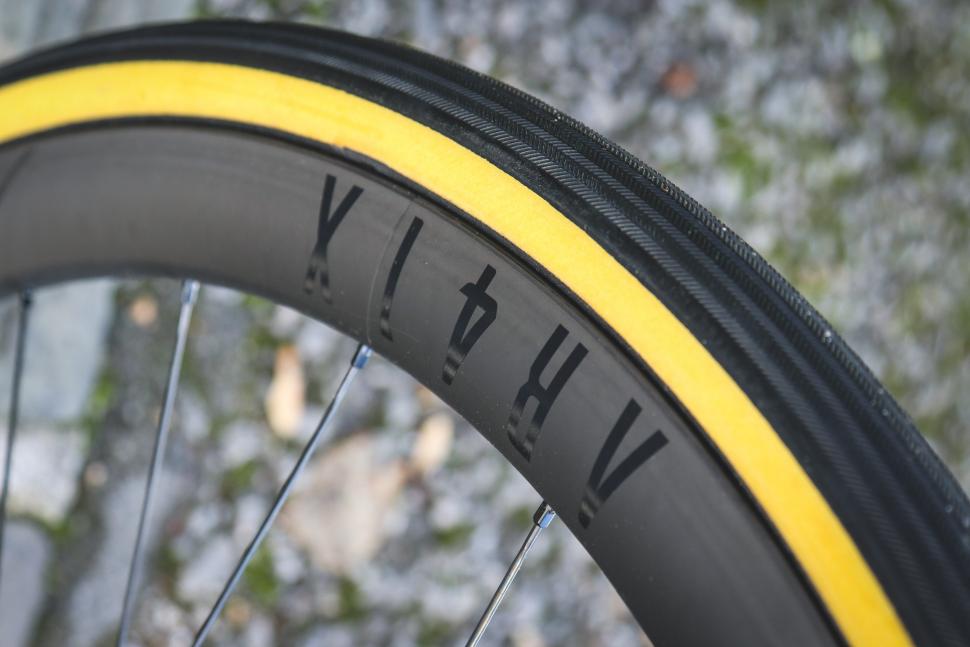
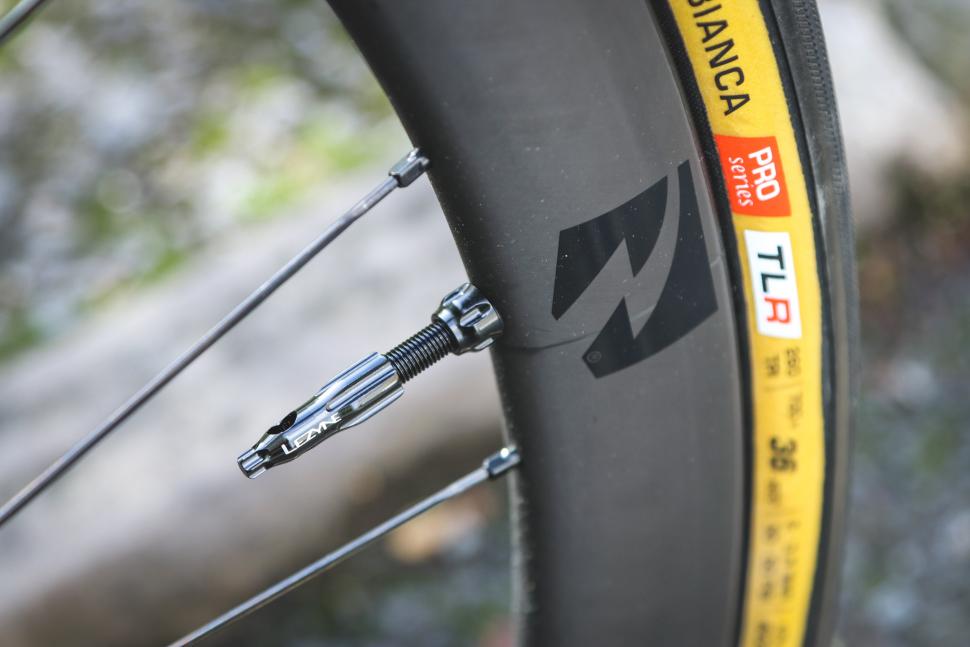
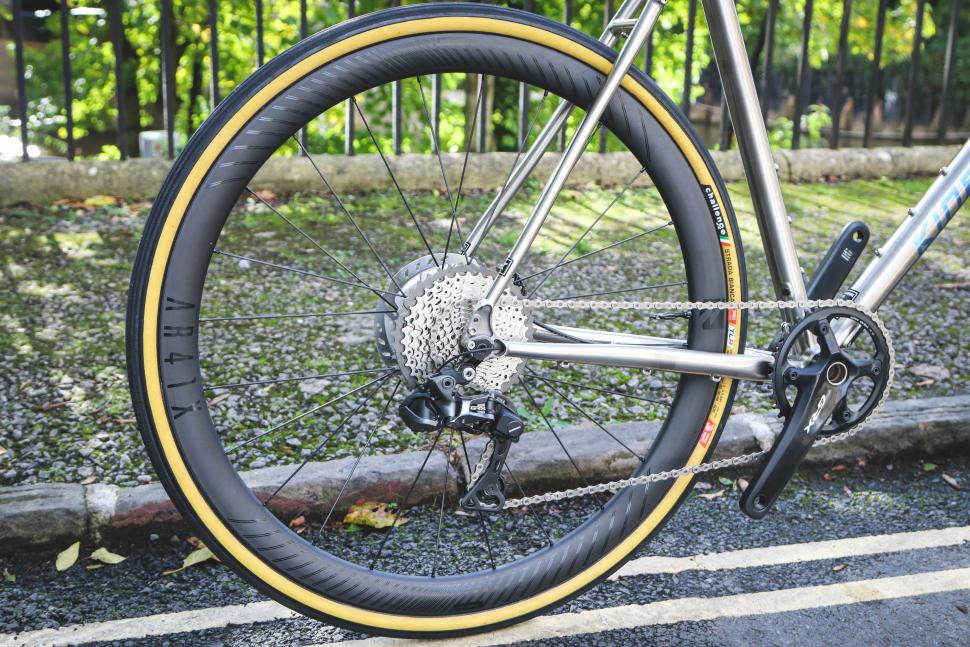
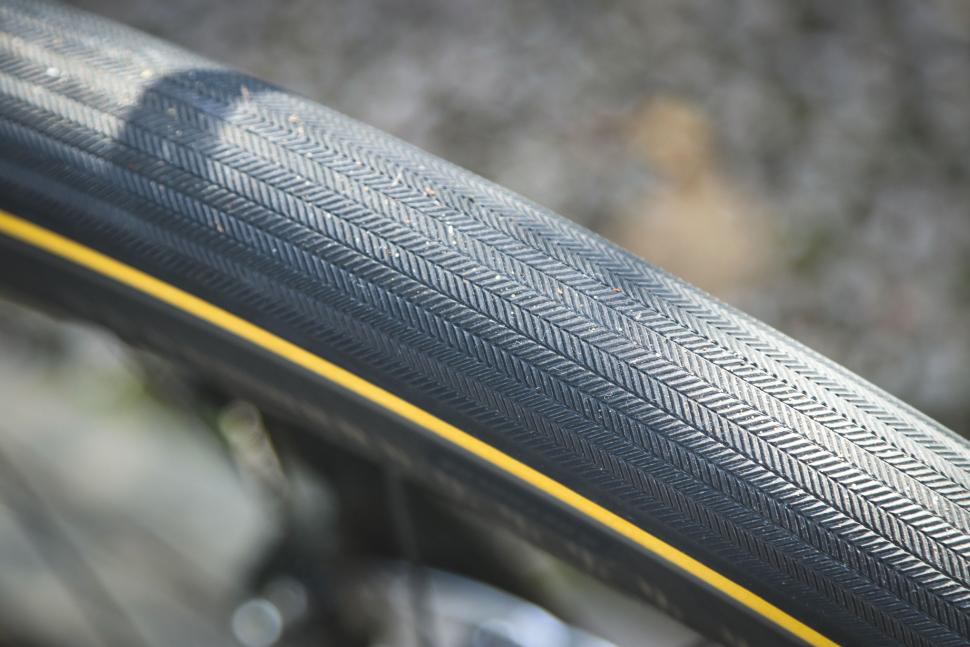
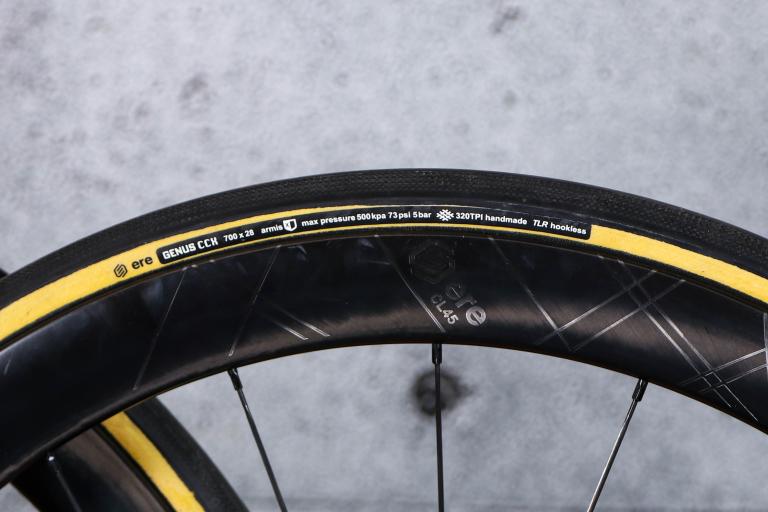
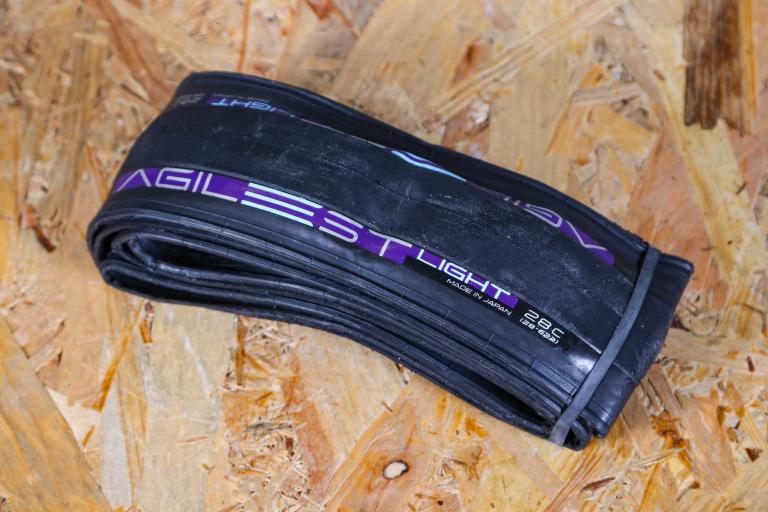
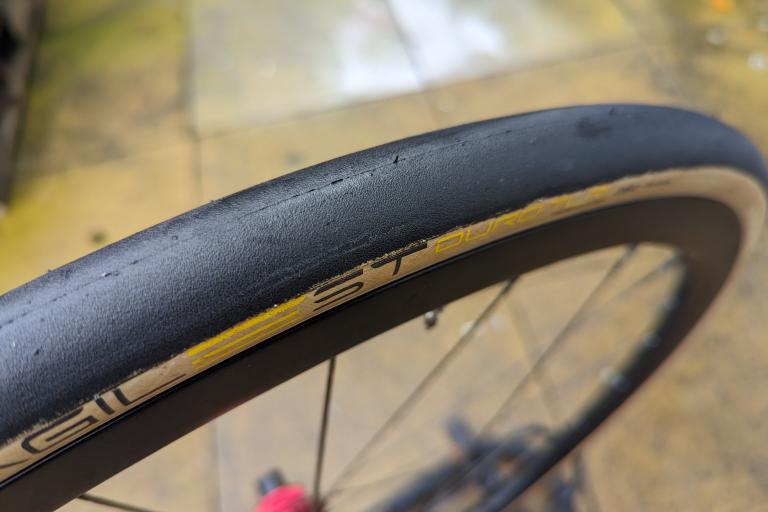
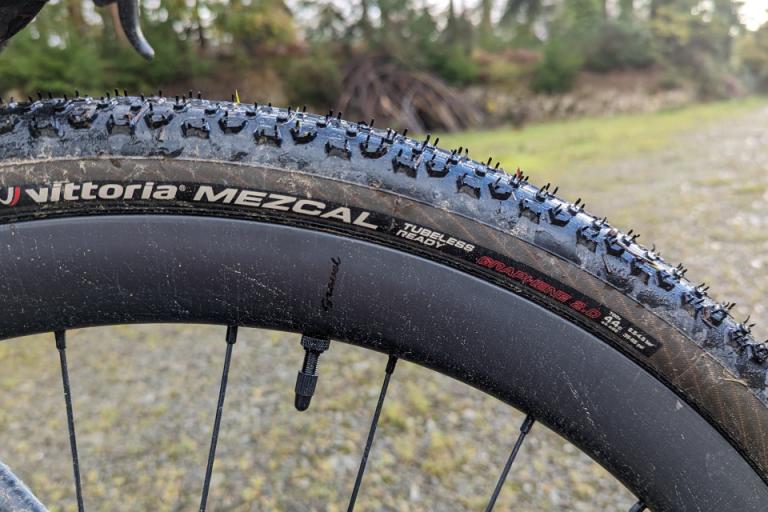
Add new comment
22 comments
Somewhat old review but whatever: I recently acquired a pair of these Strada Bianca Pro TLR tyres in 30mm width. They are brilliant. I almost want to ride the bike just because of them. The ride feel is beautiful. They ride fast too. Super impressed.
They were an absolute bstard to wrestle on to the rim, and I'm experienced with tubeless, but once on they inflated without any fuss using a track pump. They're holding pressure well. Got about 900km on them so far. After one ride I noticed sealant on the back of the seat tube but without noticeable pressure drop.
Fantastic, characterful tyres.
I used a set of these for 6mths as a challenge tire tester. They went like stink and felt lovely, but the quality control was appalling (2 of them delaminated at 40psi and one of them was neither straight nor circular), and their ability to stop punctures was appalling even in summer.
How wide do they measure when installed, and on what rim inner width were they measured?
Don't have specs for these exact tires, but here are the measured widths of some similar Challenge tires, mounted on 21mm IW rims, that you may draw inferences from:
36.2mm - 36c Strada Bianca Pro (non-TLR)
36.1mm - 36c Gravel Grinder Pro (non-TLR)
36.7mm - 36c Gravel Grinder Pro TLR
Thanks for the reply Gary.
I emailed Challenge about measured width for this new generation of Strada Bianca PRO HTLR 260tpi. They replied that they all measure true to size on a 22mm ID wheel, which is in line with your measurements on 21mm rims.
I had an old version of these. Found them to be beautiful tyres but far too fragile to be practicle for use in the UK.
I had them on my Cannondale Topstone.
In short: excellent grip and rolling resistance, nice looks.
Unfortunately very poor puncture resistance (especially on wet roads) and wear rapidly (only 2500km for rear tire).
I had them first tubeless but after a small puncture in sidewall I had to use a tube. So I agree with the comments on the sidewall.
conclusion: not recommended because of poor puncture resistance (average of 1 flat/week).
Wow! Lots of vitriol for poor old Dave and road.cc here, not to mention for the tyres.
I have the 30mm version fitted on my aero road bike and they are, frankly, bloody brilliant, aside from the price. Actually, they're bloody brilliant despite the price. They roll well, they're supple and comfortable on poor roads, they give me enough confidence on occasional gravel and those tan sidewalls look epic. I'd have given them 9 out of 10, dropping one mark for the fiddly set-up. Put simply, if you want tough, fast and pretty tyres, get them. If you don't, quit whinging and buy something else.
They roll well
[/quote]
such a totally meaningless statement that pops up on every tyre "test".
stop, just please stop.
But they do! What else do you want me to say?
Comparatively they're average in rolling resistance.
saying a tyre rolls well is just BS bingo.
Well don't read my comment then! THey may be average in rolling resistance terms but they're comfortable, flexible, fast (for me at least). If you don't like them then don't buy them but please stop dissing my opinions!
Now what's worse, correctly describing a key feature just from your subjective perception but without proof, or, disallowing that claim due to the lack of proof, countering with a just as unfounded, but wrong claim?
Because you will find the tyre has recently topped the bicyclerollingresistance leaderboard in the CX/Gravel category for having the least rolling resistance among tyres of similar width.
"big chamber slick"
Right next to picture of a disticnctly herringboned tread. So it's a not great off road, not great on road, treaded slick that costs £75 - more than the tyres for any of our cars - yet still gets 4stars? Methinks I smell a rat...
Some very big negatives called out and it still gets ⭐️⭐️⭐️⭐️ 🤔
poor sidewall so not that great off road and a tread that not great on road.
so what's it good for then ?
My main complaint with these reviews is that I don't think the side walls have actually been tested at all. There's certainly no details of how.
So they might actually be quite good but we just don't know because all we're presented with is opinion and a dodgy out of 10 score based on that opinion.
Um - leaving aside the 'dodgy' bit, that kind of seems like basically the definition of a review.
What does "hugely supple" actually mean here?
It's sounds like
bul, like something that hasn't been measured and is completely annicdotal.Looking at the results from BicycleRollingResistnace tests for the Strada Pro clincher, it's not a bad tyre but not up with the best on any metric. e.g. a tyre like the GP5K which isn't as pretty but is definitely faster and has a street price less than half of the Strada Bianca Pro.
It's like every review for a tan walled tyre is just copied and pasted from a template that says "if it's got brown side say it's 'supple', it's tan it must be true".
Has Continental released the GP5k in something bigger a 32c? If not, I'm not sure why that's being proferred as an alternative.
As for .crr, the non-TLR version of these have the lowest .crr of any 35-40c size tire I've seen tested, including the Rene Herse Bon Jon Pass. Haven't seen the TLR version tested, but other TLR-versions of Challenge's PRO gravel tires have tested essentially the same as their non-TLR counterparts (with latex tubes).
GP5k biggest is 32mm.
That's totally fair but the reason for the comparison is only because BicycleRollingResistance haven't yet tested the 35-40c TLR version yet, hence I looked for a comparison to what they had tested, 25c. It's not a recommendation on what to buy.
I'm not really complaining about the tyre or its performance but about random conclusions in product reviews where a test hasn't been performed.
If you've got test results for .crr of tyres in 35-40c range please post a link to them because that would be so much better for everyone than just annicdotes like buy these "they're toasted". (I hope that doesn't sound sarcastic, I really, really would like to see more test data for .crr and puncture protection).
it's the fact that it has a 260tpi casing and a non-vulcanized construction that makes it supple, not the fact it's brown. tanwalls often use this method of construction, though not always.